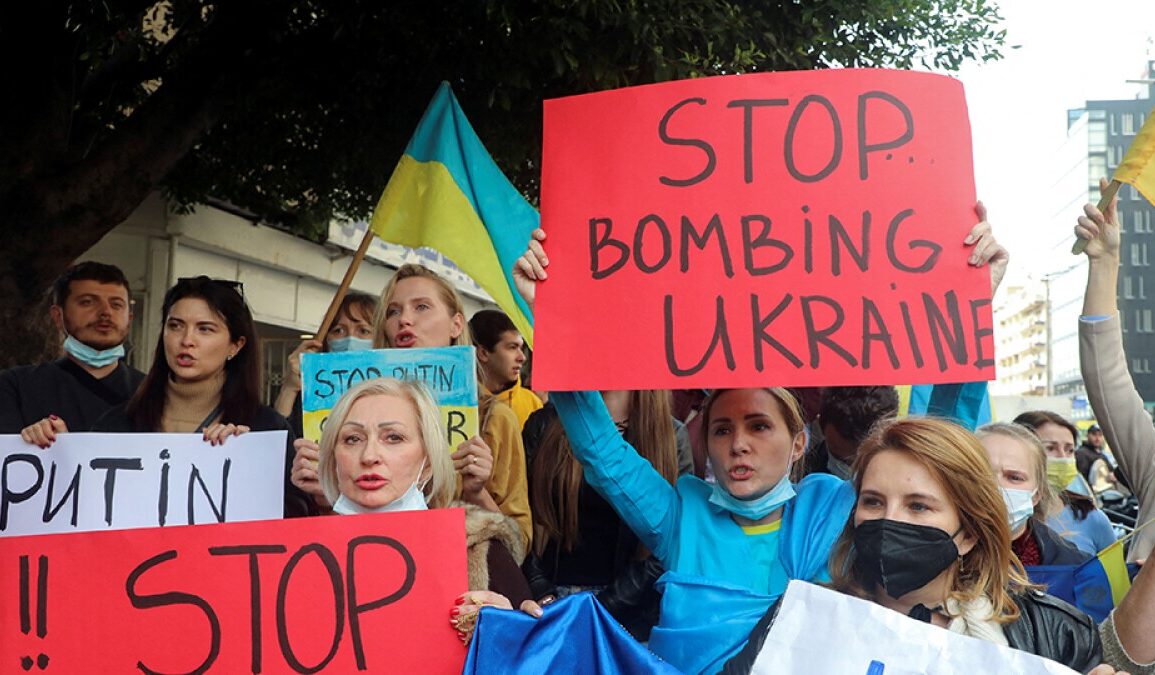Tens of thousands of soldiers fell on both sides, thousands of Ukrainian civilians were killed, and countless cities were destroyed. In addition, there are energy shortages around the world, inflation and, in many developing countries, hunger. That is the result of a war that is far from over after a year.
Russian President Vladimir Putin has not achieved his goal of seizing all of Ukraine, but Russia controls about a fifth of the country. Ukrainian President Volodymyr Zelensky, for his part, has repeatedly said that all Russian-occupied territory, including Crimea, will be retaken.
In order for Ukraine to retain its freedom, Western states have continued to increase their arms aid. Above all, the German-made Leopard 2 could help “compensate for the blatant disadvantage of the Ukrainians on the battlefield,” CDU politician and retired colonel Roderich Kiesewetter writes to DW.
With the tanks, Ukraine hopes not only to be able to defend itself against Russian attacks. Security expert Nico Lange considers “realistic the military possibilities for Ukraine to fully recover its territory and thus restore peace,” he told Deutsche Welle. Lange believes that “Putin will only be willing to negotiate if the military situation is so favorable to Ukraine that he understands that he cannot get any benefit from this aggressive war.”
Two military scenarios
Retired Bundeswehr General Helmut Ganser does not share this view. In the early February 2023 Journal of International Politics and Society, he outlines two scenarios for a Ukrainian push south towards the Azov Sea with the help of Western tanks. In the most pessimistic, Ukrainian forces get bogged down in massive Russian defenses. Ganser prepares the Western public for “images of wrecked Leopard tanks,” which Russia will gleefully spread on the
But Ganser considers the most optimistic scenario even more dangerous. In this case, the armored units would advance to the Azov Sea and position themselves in front of Crimea. Ganser suspects that Putin would then, at the latest, extend “the general war zone to the territory of the Western states that support” Ukraine, and warns: “The danger of a slow slide, actually involuntary, towards the greatest catastrophe for All Europe.”
Nico Lange, for his part, sees the Russian nuclear threat as “an instrument of psychological warfare.” He considers that a reconquest of Crimea is not only “militarily conceivable”, but even advocates trying it for reasons of peace policy: “Precisely because Crimea would mean the greatest possible loss of prestige for Vladimir Putin, military pressure on Crimea is a way to make Russia look willing to negotiate.”
Incompatible peace goals
But even in the countries that support Ukraine, there are many who believe that without some political will for territorial commitment or alliances on the part of Ukraine, there can be no peace.
In Ukraine itself, this is not the case, according to Roman Goncharenko of the Ukrainian writing of Deutsche Welle. “In the first weeks after the invasion, Kyiv was ready to make concessions, such as neutrality, rather than aspire to join NATO. But the brutality of the Russian Army and the annexation of more territories have made the search for a commitment”.
According to a poll commissioned by the Munich Security Conference, 93 percent of Ukrainians consider a complete withdrawal from Russia, including Crimea, a precondition for a ceasefire.”
Political scientist Johannes Varwick of the University of Halle believes this is unrealistic: “In all likelihood, in the end there will be a neutral Ukraine that does not clearly fall under the Western or Russian sphere of influence,” Varwick told Deutsche Welle, who it also urges a western negotiating initiative. “If at the end of a long war or a new escalation, the same result comes out that would already be possible today, then there is no point in continuing to fight with tens of thousands of dead and traumatized people.”





